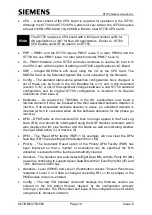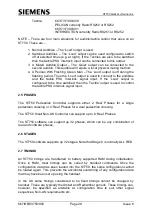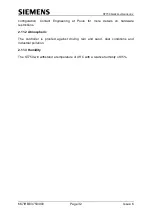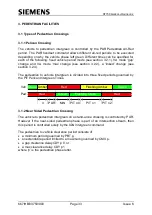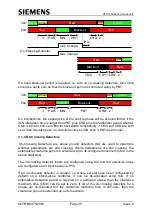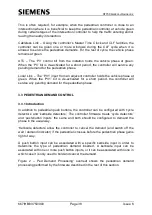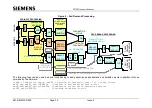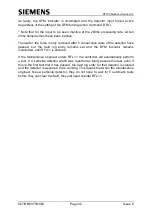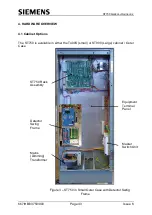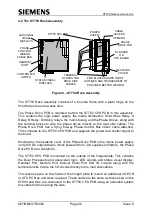
ST750
G
ENERAL
H
ANDBOOK
667/HB/33750/000
Page 33
Issue 6
3. PEDESTRIAN FACILITIES
3.1 Types of Pedestrian Crossings
3.1.1 Pelican Crossing
The vehicle to pedestrian intergreen is controlled by the PAR Pedestrian All-Red
period. The PAR handset command allows different all-red periods to be executed
depending on why the vehicle phase left green. Different times can be specified for
each of the following: fixed vehicle period mode (see section 3.2.1
), VA mode ‘gap’
chang
e and VA mode ‘max’ change (see section 3.2.2), a ‘linked’ change (see
section 3.2.4).
The pedestrian to vehicle intergreen is divided into three fixed periods governed by
the PIT Pelican Intergreen Times.
MIN
Amber
Flashing Amber
PAR
PIT n 1
PIT n 2
PIT n 0
3
Red
Green
Red
Green
Flashing Green
Green
Red
Ped:
Veh:
3.1.2 Near Sided Pedestrian Crossing
The vehicle to pedestrian intergreen on a stand-alone crossing is controlled by PAR.
However if the near-sided pedestrian phase is part of an intersection stream, then
this period is controlled solely by the IGN intergreen command.
The pedestrian to vehicle clearance period consists of:
•
a minimum period governed by PBT p,
•
an extendable period limited to a maximum governed by CMX p,
•
a gap clearance delay CDY p 0, or
•
a max clearance delay CDY p 1
where ‘p’ is the pedestrian phase letter.

